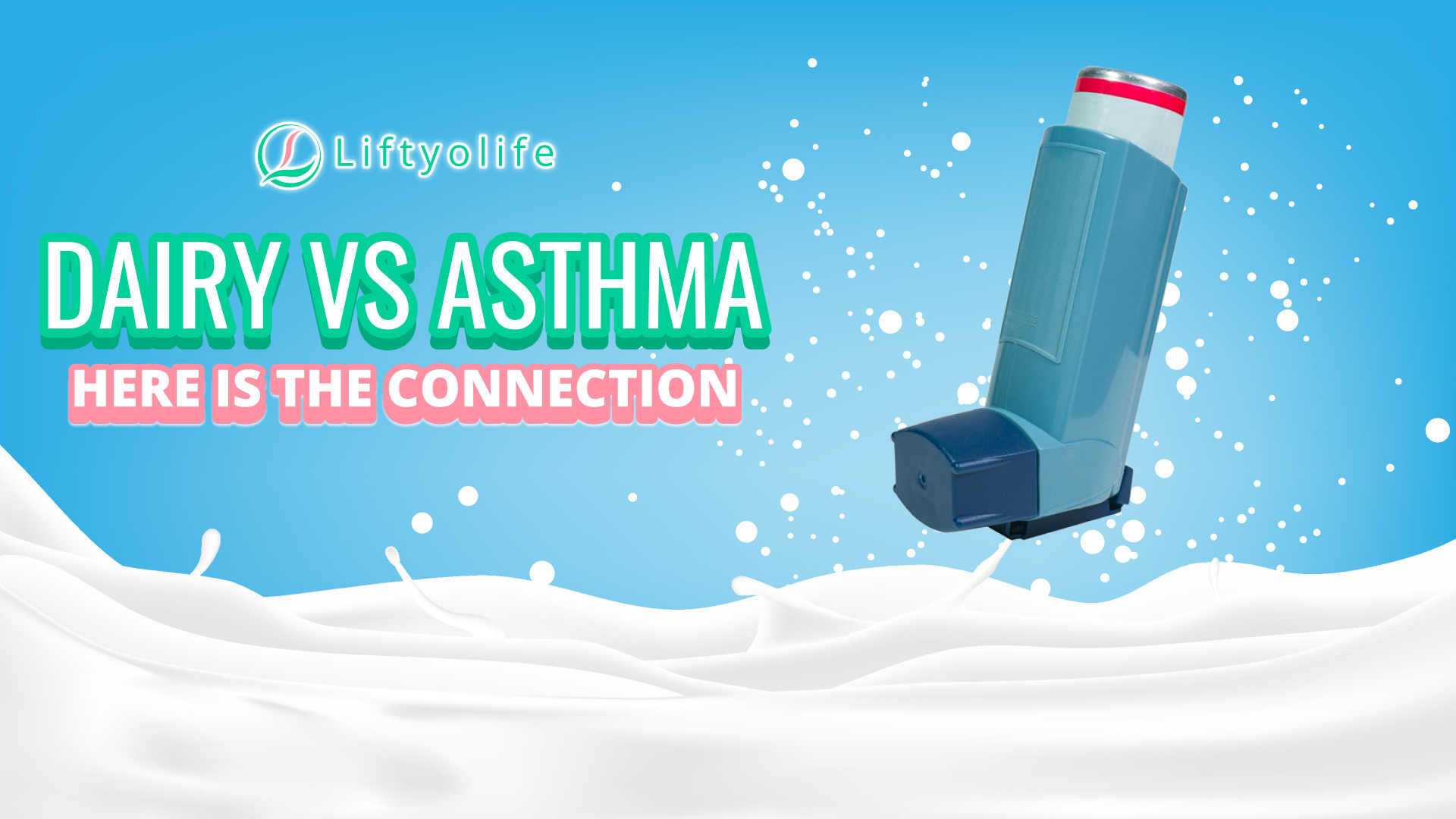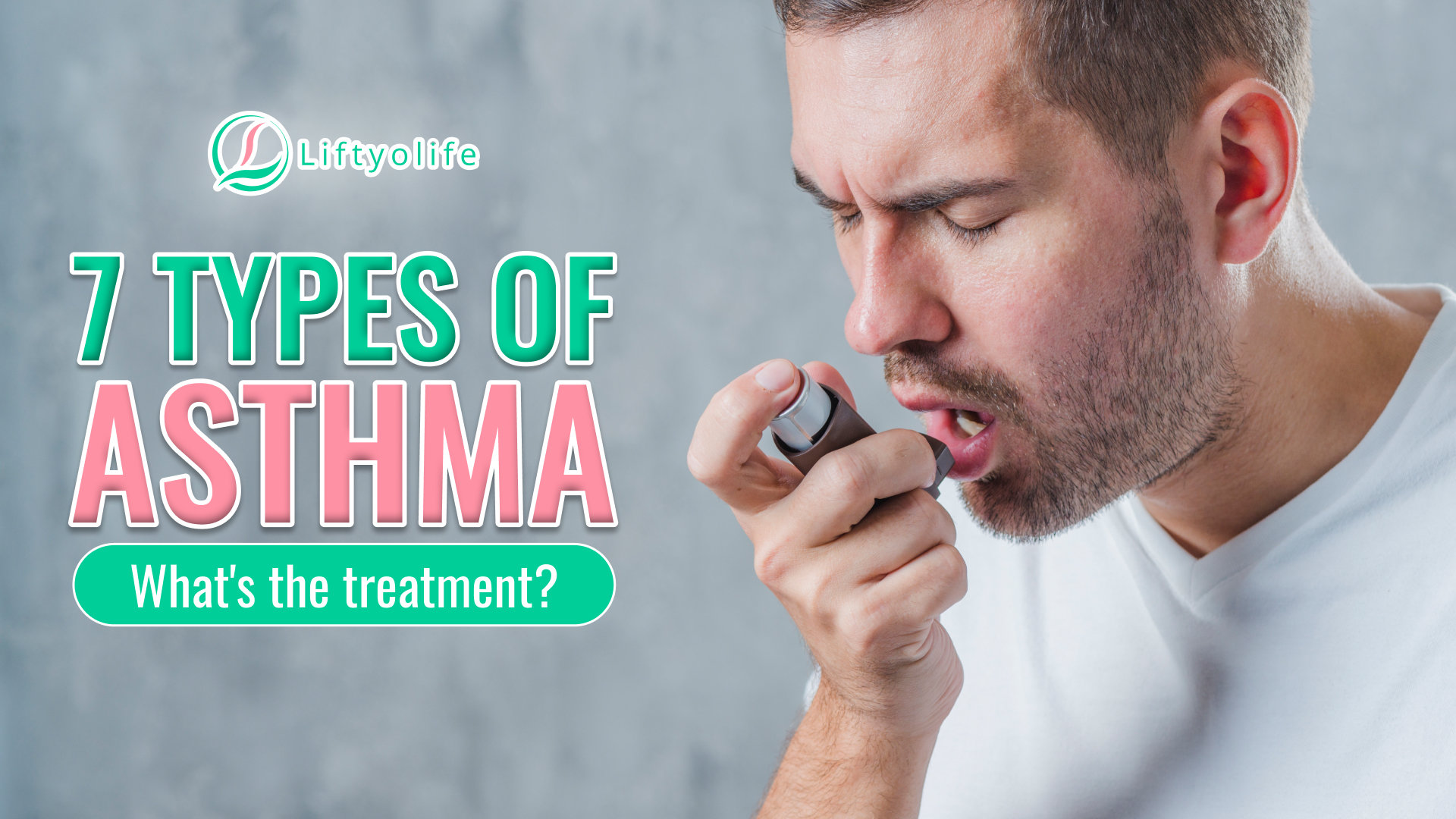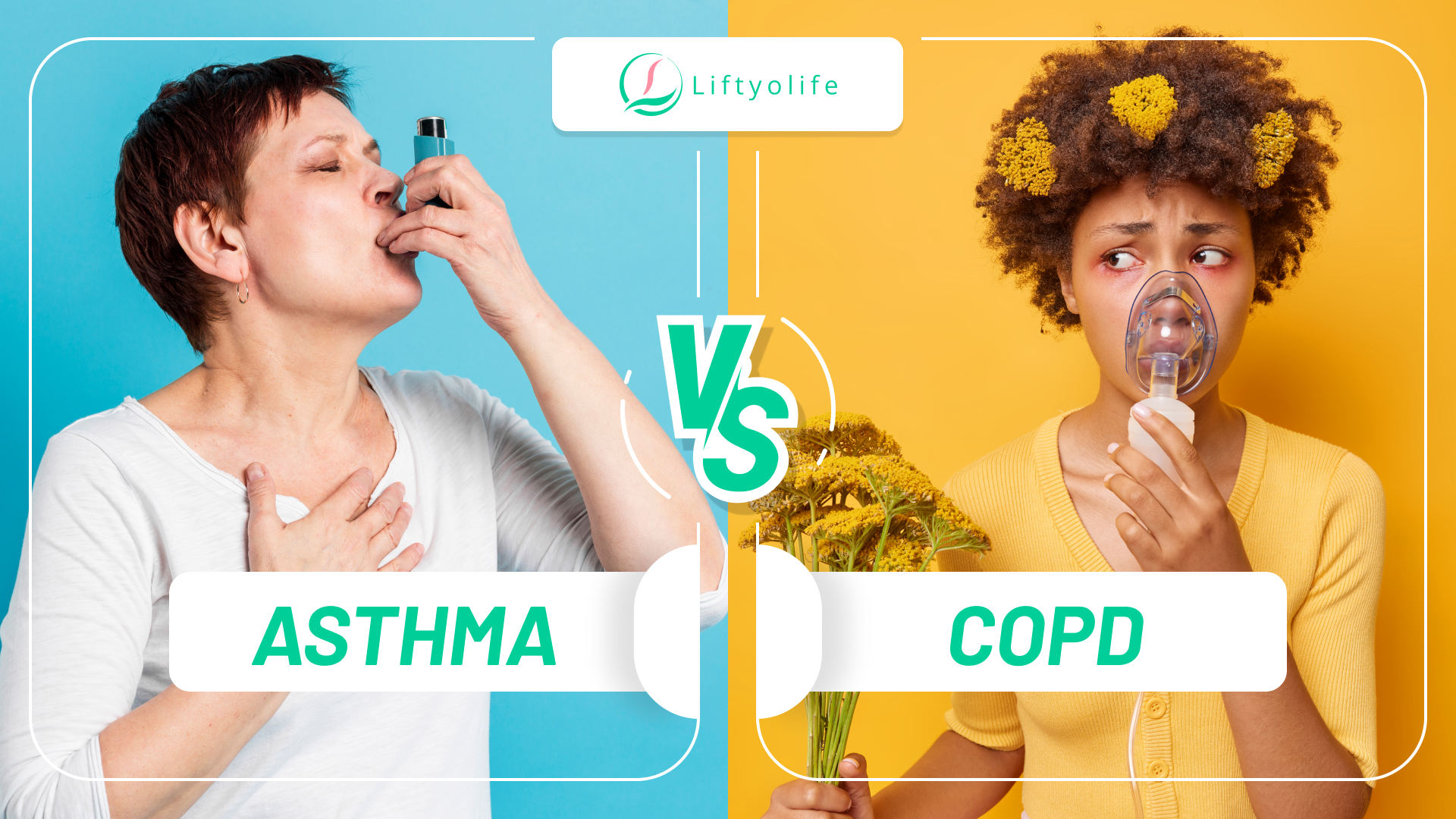Dairy And Asthma – What’s The Connection?

Dairy and asthma – What’s the connection? Milk, cheese, or yogurt is still worshiped like a type of food with the most balanced nutrition for the body. Many children, adolescents, or even adults are big fans of dairy products. But do they cause or worsen asthma? Shocked? You should not live in fear and concern of that food. Liftyolife (liftyolife.com) will help you unveil that unfairly malign.
1. What is asthma?
Asthma is a long-lasting and life-threatening respiratory disease that affects your lungs and makes the airways narrow, inflamed, or irritated, making it hard to breathe. It is one of the most widely long-term diseases in children, but it can also affect adults.
Asthma makes breathing difficult because it swells and inflames the airways. They may also become clogged with mucus or fluid. Furthermore, the round muscles that surround your airways may tighten. This narrows your breathing tubes even more.
Asthma symptoms include:
- wheezing,
- shortness of breath,
- chest tightness,
- coughing at night or early in the morning,
- mucus in the lungs.
2. Dairy and asthma
Milk and other dairy products will not trigger asthma attacks. This is true whether or not you have a dairy allergy. Similarly, if you suffer from asthma but not a dairy allergy, you can consume dairy without risk. It will not aggravate or trigger your asthma symptoms.
According to medical research, dairy consumption is not linked to an increase in asthma symptoms. Furthermore, dairy foods have been suggested as a common asthma trigger, but there is little scientific evidence to support this myth. According to a review of the available evidence on the link between milk and asthma, “current evidence does not directly link milk consumption and asthma.” (1)
In addition, a 2015 study discovered that mothers who consumed a lot of dairy products while pregnant had babies who were less likely to develop asthma and other allergy disorders like eczema.
This relationship, on the other hand, is still a contentious issue. Researchers gather the most compelling and conclusive evidence for this link. Some studies support the hypothesis, but some studies contradict it. The source of the problem is milk, which contains a lot of saturated fat. While not explicitly focusing on dairy, this review uncovered numerous studies investigating the relationship between a high-fat diet and asthma’s onset, asthma’s worsening, and overall lung function.

Dairy and asthma
3. Dairy allergy or lactose intolerance?
Lactose intolerance and dairy allergy have similar symptoms. Many people mistakenly believe they are the same thing. However, how they are caused (and affect your body) differs greatly.
As with other allergies, a true dairy allergy involves a specific immune system response. Some people, however, are lactose intolerant. This is a dairy food sensitivity caused by an inability to digest lactose.
3.1. Dairy allergy
Dairy allergy interconnects the immune system: suppose you have it, your body reacts to the proteins in dairy products as if they were dangerous invaders. It emits substances that cause allergic reactions. This allergic reaction ranges from mild (rashes, swelling) to severe (trouble breathing, loss of consciousness).
Anaphylactic shock, which affects a person’s ability to breathe, can also occur and be fatal.
Dairy allergy is the most common allergy, particularly among children. It is even more common in infants. Milk allergies affect up to 2 out of every 100 children under four.
3.2. Lactose intolerance
Lactose intolerance affects the digestive system in the following ways: If you have it, your body does not produce lactase, the enzyme required for lactose digestion. That is the sugar found in milk and dairy products. Undigested lactose moves into your colon, where it is broken down by bacteria and causes bloating and gas instead of generally digesting in your stomach and small intestine. It’s unpleasant, but it’s not dangerous.
Lactose intolerance does not apply to everyone who has difficulty digesting lactose. Doctors reserve the term for people who develop symptoms after eating dairy products within a few hours.
Lactose intolerance manifests as the following symptoms:
- bloating,
- abdominal pain,
- nausea,
- diarrhea,
- gas,
- vomiting.
Lactose intolerance is common in adults, with approximately 36% of Americans suffering from it by 20. (2)

Dairy allergy or lactose intolerance?
4. Does dairy cause mucus?
Milk consumption does not result in mucus production or the development of asthma.
The belief that milk increases mucus production dates back hundreds of years and is still widely held. There is no scientific evidence that milk causes increased mucus production in the airways or throat or worsens cold or asthma symptoms. Several studies have failed to show a significant link between the two. Although many people reduce their milk consumption when they have a cold, one clinical trial found that milk and dairy food consumption was not associated with increased upper or lower respiratory tract congestion symptoms. Furthermore, milk consumption was found to be unrelated to increased nasal secretions, coughing, nose symptoms, or congestion in studies. (3)
5. Diagnosis of a dairy allergy
Two typical tests to diagnose dairy allergy are as below:
- A skin prick test: Involves placing a small drop of liquid containing the dairy allergen under your skin on your forearm or back. A dairy allergy is likely if you notice a raised bump surrounded by itchy red skin.
- A blood test: Determine the number of specific antibodies in your blood.
Your allergist will go over the results with you. Both tests have the potential for “false positives.” This means that you can test positive for an allergy even if you do not have it.
If you have a suspected but not confirmed allergy, your doctor may ask you to take an oral challenge. You’ll be fed various foods that may or may not contain milk in increasing amounts to see how you react to milk-containing foods.
6. Treatments
6.1. Dairy allergy treatments
- Avoidance
Begin by eliminating milk and dairy products from your diet. If you suspect your child has a dairy allergy, consult with their doctor about the best way to replace the essential nutrients they have been receiving from milk and milk products.
- Medication
-
- Antihistamines can provide temporary relief from minor allergic reactions.
- If a severe allergic reaction (anaphylaxis) appears, an emergency injection of epinephrine (adrenaline), as well as a trip to the emergency room, are required.
- Oral immunotherapy
Oral immunotherapy can be used to treat milk allergies on a long-term basis. Your allergist would devise an oral immunotherapy treatment plan that would include administering small amounts of milk over time to build immunity. The treatment would begin in a clinic before progressing to higher doses at home.
6.2. Asthma treatments
Asthma has no cure at the moment, but treatment can help control the symptoms and allow you to live an active life.
The primary treatment is inhalers, which allow you to breathe in the medicine. If your asthma is exacerbated, you may also require tablets and other therapies.
7. How to avoid dairy
- Take calcium from vegans.
Magnesium, potassium, and vitamins C are just a few nutrients found in plant-based calcium.
Keep in mind that simply consuming calcium is insufficient. A sufficient amount of vitamin D is needed when absorbing calcium.
- Stay away from hidden dairy.
You can avoid these hidden dairy sources by reading labels. Keep in mind that casein and whey protein are both dairy products. Looking at the allergy warning under the ingredients is an excellent way to spot hidden dairy.
- Make up for a lower protein intake.
You need to increase your protein intake after eliminating dairy. Legumes, dairy-free yogurt, nuts, and whole grains are high in protein.
- Utilize plant-based milk.
There are numerous cow milk substitutes available:
- Soy milk and rice milk.
- Almonds, coconuts, and oats milk.
- Replace butter with vegetable oil spreads.
According to experts, soy milk is the healthiest plant-based milk.
- Take it easy on the processed dairy-free alternatives.
Consume dairy-free junk foods in moderation, such as ice cream and cheese. Try these healthy vegan ice cream recipes instead.
- Experiment with new sandwich toppings.
Use ripe avocado to add flavor to your sandwich while also providing many nutrients.
8. Other foods linked to asthma
Other foods to which many people are allergic include:
- Tree nuts and peanuts (including cashews, almonds, walnuts, hazelnuts, pecans, and pistachios),
- Wheat,
- Soy,
- Eggs,
- Shellfish and fish.
Sulfites, a food additive, can occasionally trigger an asthma attack. These are substances that are added to some foods to keep them fresh. Sulfites can be found in processed foods such as:
- Dried fruits and vegetables,
- Bottled lemon juice,
- Packaged and ready-to-eat potatoes,
- Beer and wine,
- Cherries maraschino,
- Packaged shrimp,
- Pickled food.
Natural chemical compounds known as salicylates can also cause an asthma flare-up in rare cases. They can be found in:
- Coffee,
- Tea,
- Several herbs and spices,
- Aspirin.
There is no strong evidence of a link between dairy and asthma. However, if your asthma symptoms worsen each time you consume dairy food, so you want to avoid asthma attacks, you should limit your daily dairy food intake. Because prevention is more accessible and less cost-intensive than cure, if you have asthma, make sure that what you eat has been approved by your doctor. To fill any gaps in your knowledge about health care, contact Liftyolife (liftyolife.com) right away.






